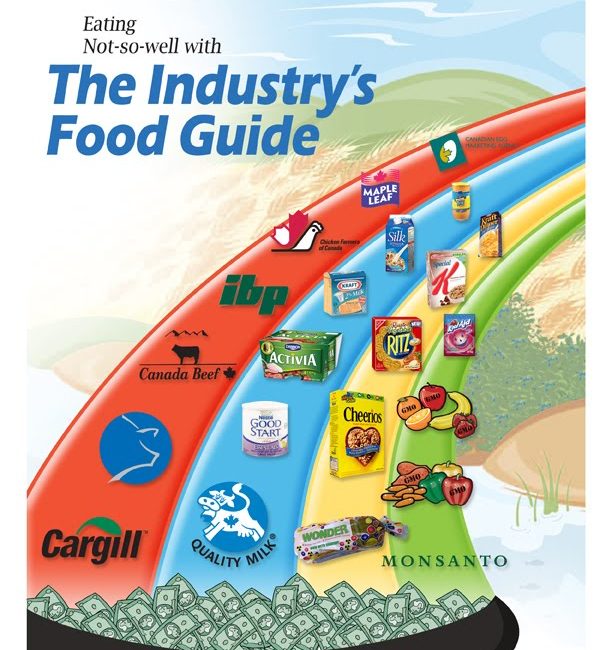Is Canada’s Food Guide Relevant Again?

Do you remember a picture of a colourful 4 quadrant plate of food or the infamous food rainbow hung all over your classroom as a kid? I certainly do. I also remember my Grade 6 gym teacher Mr. B stumbling through the guide as part of the “health curriculum”. Many of us grew up knowing the general recommendations of the food guide. Not sure the same can be said these days.
But in the coming weeks Canada’s Food Guide is expected to make some significant changes. And early reports indicate, in our opinion, the changes are a significant step in the right direction (unless you are routing for behemoth big ag lobby groups).
But is the food guide even relevant anymore? Do people use it as a source of dietary guidance? Health Canada has found that the food guide ranks fourth behind the internet, friends and television as a source of information on how to eat healthy. However it is still the 2nd most requested Canadian government publication behind income Tax Forms! So the guide still carries some weight. Especially in places like schools, physician’s offices and hospitals.
Early information signals that the new guide will mark the end of the 4 “food groups”. Meat and dairy will no longer have their own category and instead will be grouped under “protein foods”. This time around Health Canada took a big step forward by removing industry groups and representatives from any direct advisory role in preparing the updated food guide. For the first time since the 1980’s they placed the importance of science over the economic interests of powerful food industry lobby groups, such as meat and dairy.
A 2015 evidence review by Health Canada found that most Canadians have low intakes of vegetables and fruit, milk and alternatives and whole grains. And about one-third of total calories come from foods high in fat, sugar or salt. Essentially we are eating too much processed junk. No surprise there…a quick stroll of any of our major local grocery stores would highlight that.
The new guide will encourage Canadians to eat more fruits and vegetables, whole grains and especially plant-based sources of protein.
The future of our health care system depends on these changes. A recent study published in the Canadian Journal of Public Health concluded that insufficient fruit and vegetable intake costs the Canadian economy 4.39 billion annually through hospital care, drugs, physician services, premature death and disability.
Another significant change in the new food guide is recommending not just WHAT we should eat, but HOW we should eat. For example being mindful of your eating habits, cooking more often, enjoying your food and eating meals with others. This section seems to be a reflection of Brazil’s highly regarded dietary guidelines. The benefits of the “how we should eat” include improved digestion, more efficient control of what and how much food is consumed and enhanced family and social life, in particular, more pleasure in eating.
Adding recommendations on “how we should eat” reminds me of the blue zones, where the world’s healthiest people live. These include: Ikaria, Greece; Okinawa, Japan; Ogliastra Region, Sardinia, Loma Linda, California and Nicoya Peninsula, Costa Rica. These blue zones all emphasize the importance of eating home cooked meals together with family and friends. Eating is an experience to be enjoyed, not a job that must be endured.
With all the noise and hostility in the modern diet wars between the extremist paleo, keto, vegan (and even now carnivore) folks…maybe the 2019 Canadian Food Guide will find a sweet spot as a balanced science-based perspective on healthy eating.
And if you ever get lost in a long, confusing diet rabbit hole…may we offer a simple mantra that resonates with us from journalist Michael Pollen: Eat real food…mostly plants.
